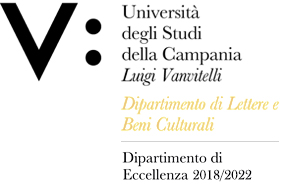Pierluigi DE FELICE
Insegnamento di GEOGRAFIA
Corso di laurea in LETTERE
SSD: M-GGR/01
CFU: 12,00
ORE PER UNITÀ DIDATTICA: 60,00
Periodo di Erogazione: Secondo Semestre
Italiano
| Lingua di insegnamento | Italiano |
| Contenuti | Analisi e interpretazione del rapporto comunità umane e ambiente: conoscere gli elementi naturali (litosfera, idrosfera e atmosfera) e i loro processi evolutivi in relazione agli ecosistemi per interpretare l’organizzazione del territorio che sarà studiata e analizzata anche attraverso le fonti cartografiche. |
| Testi di riferimento | 1) Alan Strahler, Fondamenti di geografia fisica, Edizione italiana a cura di Elvio Lavagna e Guido Lucarno, 2015. |
| Obiettivi formativi | CONOSCENZA E CAPACITÀ DI COMPRENSIONE |
| Prerequisiti | Non è richiesto nessun prerequisito |
| Metodologie didattiche | Lezioni frontali, esercitazioni e seminari. |
| Metodi di valutazione | Metodi di valutazione |
| Programma del corso | Il tempo della natura e il tempo della storia studiati, analizzati e interpretati attraverso i seguenti argomenti: |
English
| Teaching language | Italian |
| Contents | Analysis and interpretation of the relationship between human communities and environment: knowledge of natural elements (lithosphere, hydrosphere and atmosphere) and their evolutionary processes in relation to ecosystems to interpret the organization of the territory that will be studied and analysed also through cartographic sources. |
| Textbook and course materials | 1) Alan Strahler, Fundamentals of Physical Geography, Italian Edition edited by Elvio Lavagna and Guido Lucarno, 2015. |
| Course objectives | Knowledge and comprehension abilities |
| Prerequisites | No prerequisite is required |
| Teaching methods | Classroom lessons, exercises and seminars. |
| Evaluation methods | The exam is made up of a written test (structured and semi-structured) propaedeutic to the oral test. For a reference framework for the assessment of the overall level of content acquisition and achievement of course objectives by the student, the following scheme is to be considered: |
| Course Syllabus | The period of nature and the period of history studied, analysed and interpreted through the following topics: |








